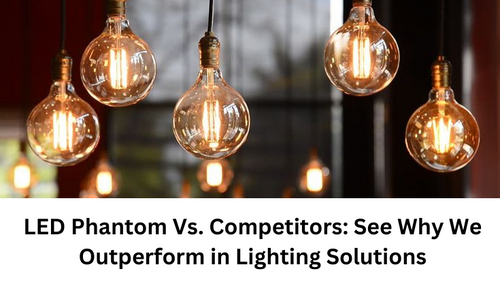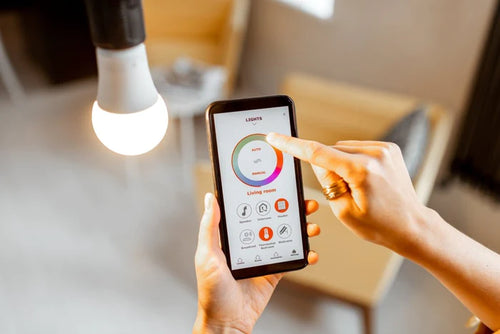Understanding DLC, UL, and ENERGY STAR Lighting Certifications | LED Phantom
When choosing LED lighting for a commercial or industrial project, product quality and compliance aren’t just "nice-to-haves"—they’re non-negotiable. With tighter energy codes, stricter rebate qualifications, and increasing scrutiny around product reliability and safety, understanding third-party certifications has never been more essential.
At LED Phantom, we stock a wide range of lighting solutions that are DLC qualified, UL listed, and ENERGY STAR certified—so our customers benefit from verified performance, rebate eligibility, and peace of mind. This article will break down what each of these certifications means, how they differ, and why they matter for your next lighting project.
What is the DesignLights Consortium (DLC)?
The DesignLights Consortium (DLC) is a nonprofit organization focused on advancing high-quality, energy-efficient lighting solutions in commercial settings. DLC certification isn’t a government program—it’s an industry-standard benchmark recognized by utility programs across North America.
Key DLC Criteria:
-
Minimum efficacy levels (lumens per watt)
-
Color rendering and light distribution
-
Thermal management and longevity
-
Product labeling and testing transparency
Why DLC Certification Matters:
-
Rebate Eligibility: Most commercial lighting rebates from utilities require DLC-listed products
-
Energy Performance: DLC-rated fixtures guarantee high efficiency and consistent output
-
Networked Lighting: DLC now includes DLC Premium and DLC NLC tiers for advanced controls and smart lighting platforms
Real-World Application:
LED Phantom's DLC-qualified flat panels and high bays help customers unlock utility rebates ranging from $25 to $200 per fixture, depending on the program and state.
What Does UL Listing Mean?
UL: Safety First
UL (Underwriters Laboratories) is a third-party safety certification organization that tests products for electrical safety, fire risk, and other hazards.
Types of UL Listings:
-
UL Listed: Product has been tested and meets all necessary safety standards
-
ETL Listed: An equivalent certification provided by Intertek (also valid for most applications)
-
UL Wet/Damp Location Rated: Indicates safe use in environments with moisture or exposure
Importance in Your Project:
-
Required for Permits & Inspections: Many AHJs (Authorities Having Jurisdiction) mandate UL or ETL listing
-
Peace of Mind: Ensures product won't pose safety risks over time
-
Durability in Harsh Environments: Look for IP65/IP66 + UL ratings for outdoor or industrial installations
Examples from LED Phantom:
Our UL-listed LED emergency exit signs and IP65 vapor-tight high bays offer critical safety and compliance in commercial kitchens, warehouses, and parking garages.
What is ENERGY STAR Certification?
ENERGY STAR Overview:
Administered by the EPA, ENERGY STAR is a voluntary labeling program that promotes energy-efficient products that meet stringent government-backed standards.
ENERGY STAR for Lighting:
-
Applies mainly to residential and light commercial fixtures
-
Focuses on energy savings, color consistency, and lifespan
-
Includes quality standards like rapid start, no flicker, and high CRI
Value for Businesses:
-
Credibility & Recognition: ENERGY STAR is widely known and trusted
-
Support for Green Building: Helps with LEED and WELL credits
-
Lower Lifetime Operating Costs: ENERGY STAR-certified products often come with higher energy efficiency and reliability standards
LED Phantom features a range of ENERGY STAR-rated LED downlights, lamps, and ceiling fixtures for projects aiming for high sustainability standards.
Certification Comparison Table
|
Feature |
DLC |
UL |
ENERGY STAR |
|
Primary Focus |
Energy efficiency & rebates |
Electrical safety |
Energy efficiency (res.) |
|
Required for Rebates? |
Yes, in most utility zones |
Often required by AHJs |
Sometimes (residential) |
|
Key Use Case |
Commercial LED lighting |
All electrical products |
Residential, office |
|
Testing Standards |
Photometric, efficacy |
Electrical, mechanical |
Energy, longevity, CRI |
|
Administered by |
DesignLights Consortium |
Underwriters Laboratories |
Environmental Protection Agency (EPA) |
The Business Case for Certified Lighting
1. Unlock Rebates and Incentives
Many rebate programs won't approve your project unless fixtures are DLC Premium or ENERGY STAR qualified. This can mean thousands in lost incentives if using non-certified alternatives.
2. Avoid Inspection Delays
UL or ETL listings are often required for building permits and final inspections. Using non-listed products can delay your Certificate of Occupancy (CO).
3. Lower Long-Term Liability
Certified lighting minimizes fire hazards, electrical failure, or warranty disputes. UL-tested fixtures undergo rigorous stress testing for thermal and surge conditions.
4. Support ESG and Sustainability Goals
If your company reports under ESG, LEED, or GRESB frameworks, certified lighting helps tick off compliance boxes.
LED Phantom’s Commitment to Certified Performance
We don’t just sell LEDs—we provide vetted, qualified solutions that help your business:
-
Maximize ROI through rebates
-
Pass inspections without delays
-
Ensure staff and customer safety
-
Meet procurement and sustainability guidelines
Every major LED Phantom category—including high bays, flat panels, strip lights, exit signs, and emergency drivers—features products with at least one of these certifications.
We also help our customers:
-
Locate approved DLC/UL/ENERGY STAR listings
-
Access spec sheets and test data
-
Build lighting submittals for project approval
Need help interpreting specs or rebate eligibility? Contact LED Phantom for certified lighting solutions that work.


